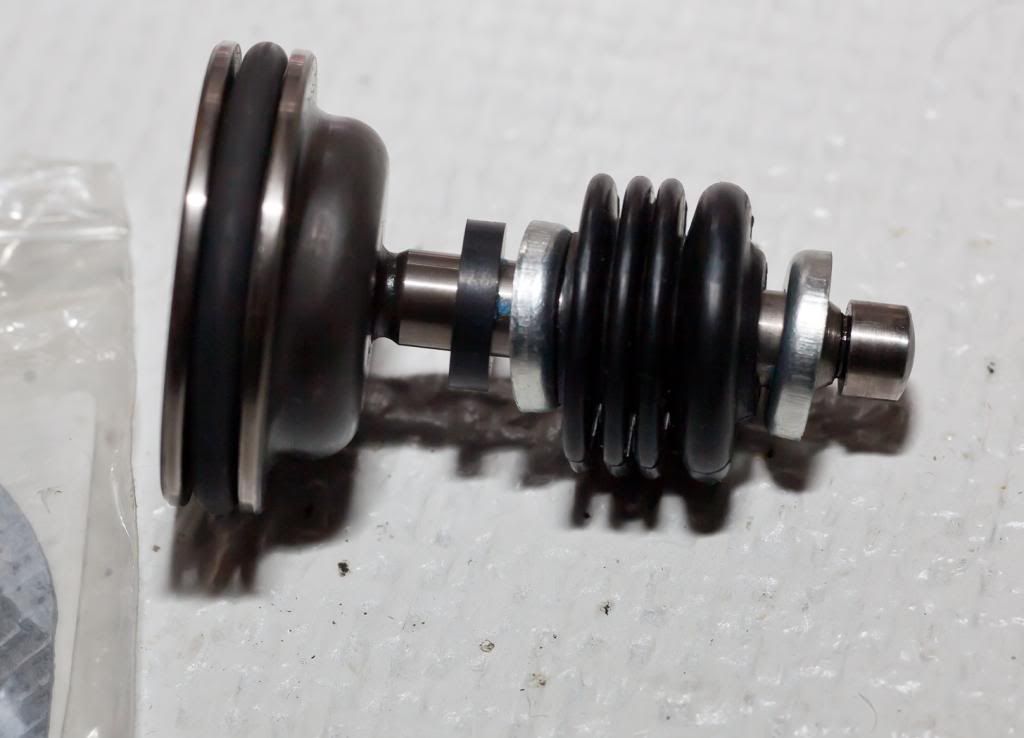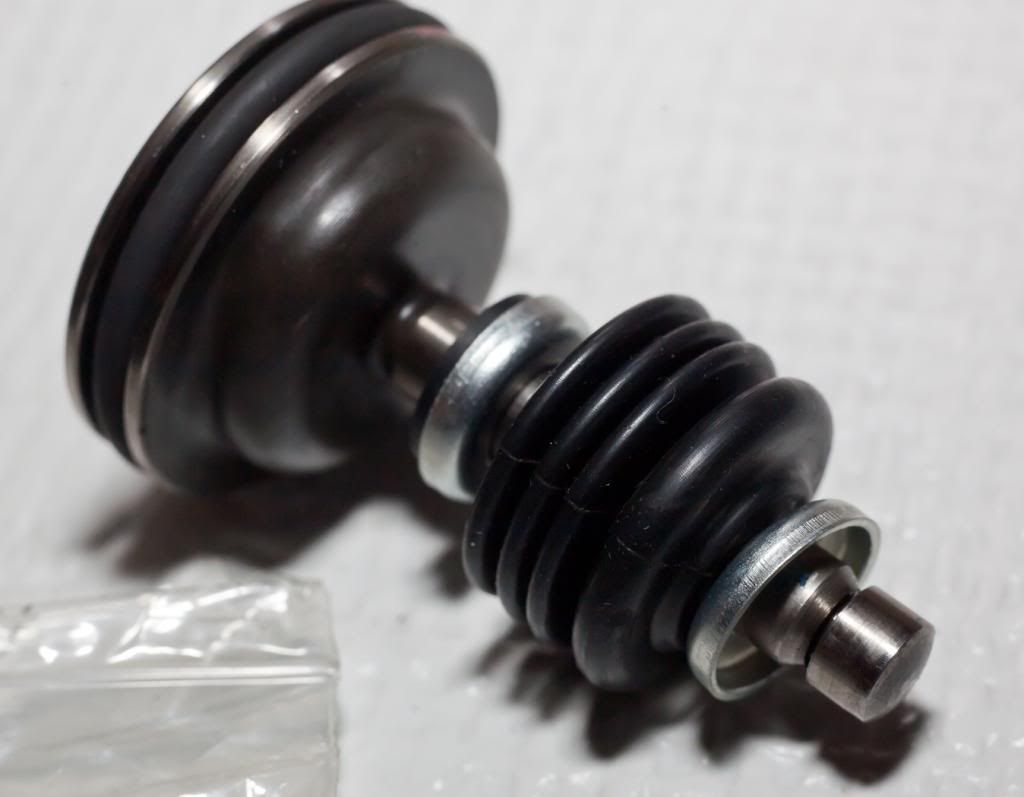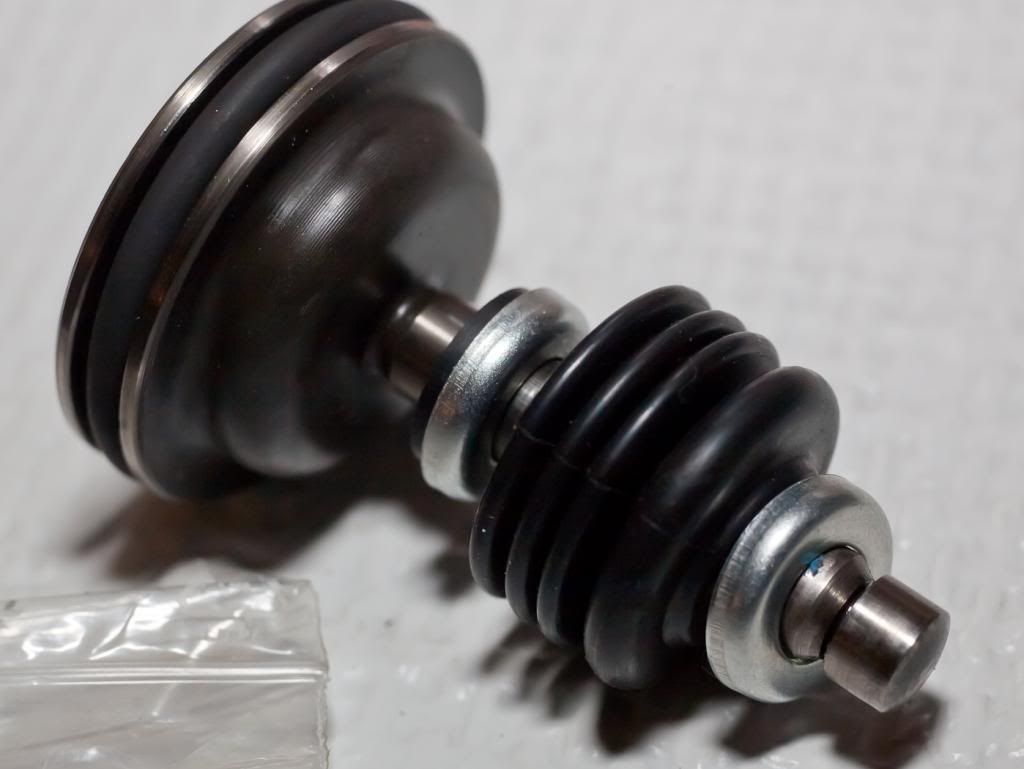Joy Joy, time to re-build the de-tensioner. 
Getting it off is easiest to remove the circlip at the bottom of the reaction spring where it connects to the pin on the plate. Item (8). Loosen the nut on the bottom of the adjuster plate and slacken. Remove the T-belt, remove the main center retaining nut and the bottom adjuster nut and you should be able to work the d-tensioner off. Becareful not to put too much lateral force as you might bend the oil feed tube. The instructions on how to disassemble are in the Shop Manual page 01-88/82.
![]()
After removing the de-tensioner, it'll probably need to be de-greased. After cleanup, I noticed the actuator rod has a little cup that was installed backwards and the bellows boot is split for 90* or so at the top - No problemo as new one provided in kit.
![]()
This kit has no less than 9 O-rings! Though when I look at the blow-up I can only identify 5. 1 big one on the plunger assy, 1 on the actuator rod, 1 on the feed tube, and another 2 on the back plate (feed tube again).
![]()
Well, no matter as I got hung-up by one of the Allen screws. Bloody thing was already 90% stripped, so maybe this has been performed before. This is a prime example of where one should only use "german torque". "Goot-n-teit"
![]()
One last thing. The pully (4) seems to have a sealed bearing. It's spinning fine, but I would like to re-pack it. If I ever get the Allen bolt off, I should be able to tell if it can be done.
Getting it off is easiest to remove the circlip at the bottom of the reaction spring where it connects to the pin on the plate. Item (8). Loosen the nut on the bottom of the adjuster plate and slacken. Remove the T-belt, remove the main center retaining nut and the bottom adjuster nut and you should be able to work the d-tensioner off. Becareful not to put too much lateral force as you might bend the oil feed tube. The instructions on how to disassemble are in the Shop Manual page 01-88/82.

After removing the de-tensioner, it'll probably need to be de-greased. After cleanup, I noticed the actuator rod has a little cup that was installed backwards and the bellows boot is split for 90* or so at the top - No problemo as new one provided in kit.

This kit has no less than 9 O-rings! Though when I look at the blow-up I can only identify 5. 1 big one on the plunger assy, 1 on the actuator rod, 1 on the feed tube, and another 2 on the back plate (feed tube again).

Well, no matter as I got hung-up by one of the Allen screws. Bloody thing was already 90% stripped, so maybe this has been performed before. This is a prime example of where one should only use "german torque". "Goot-n-teit"

One last thing. The pully (4) seems to have a sealed bearing. It's spinning fine, but I would like to re-pack it. If I ever get the Allen bolt off, I should be able to tell if it can be done.




![De-Tensioner_Kit_TRB[1].jpg](/d2/attachments/128/128656-1c459a8945d3a01748c9ecfb6bda76ec.jpg)
![Rebuild%20kit[1].jpg](/d2/attachments/128/128709-26850507d4a5c9a3421e9dcb8173893b.jpg)






